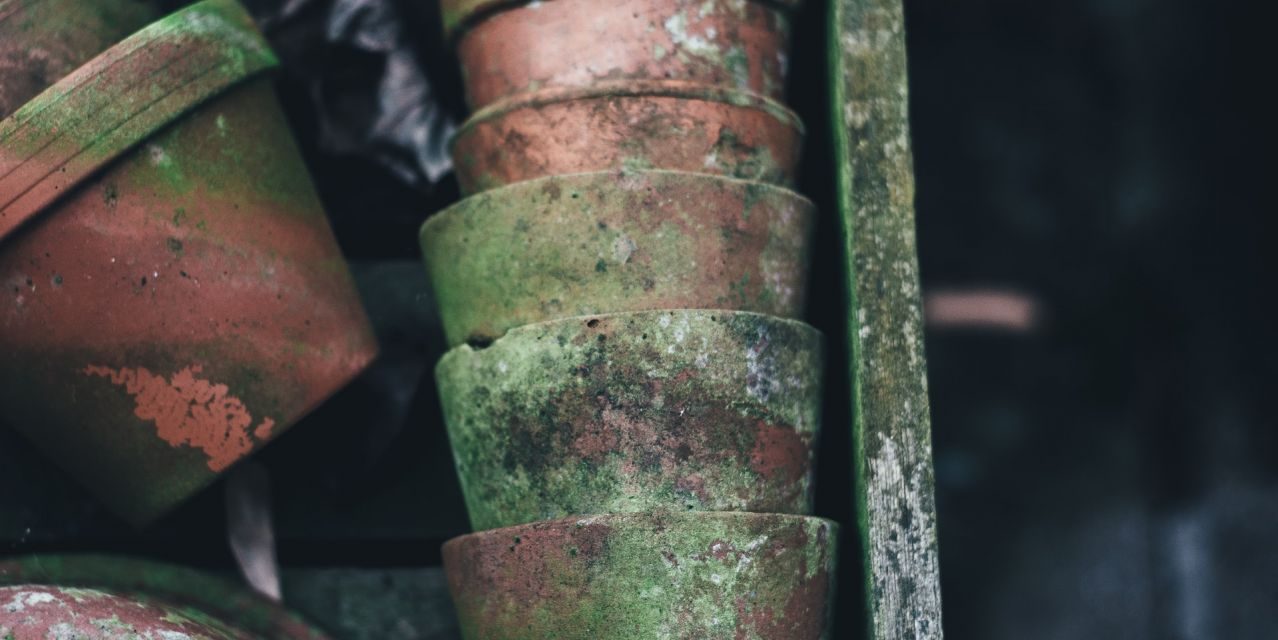One of the most popular types of containers used for gardening is the terra cotta pot. The phrase “terra cotta” was taken from the Italian language and literally means “baked earth”—terra (“earth”) + cotta (“baked”). These containers have an earthy color that is a result of the clay that is used to make them. This clay is rich in iron, and as it oxidizes and dries, it produces a deep reddish, brown hue that is iconic and timeless. The terra cotta pot has literally become the symbol of gardening.
It is very likely that you’ve walked through a garden center and been amazed at the shelves that are piled high with these clay pots. They come in all shapes and sizes – from the very small and simple to the beautifully detailed ornate giants. With consumer trends favoring natural materials and a desire to focus on sustainability, interest in these age old vessels is not going away.
Terra cotta is porous and can quickly soak up water. Because of this, it’s a good idea to soak your pot before adding soil or a new plant. This will prevent any water that is added for the plant’s benefit from being robbed by the pot itself. On the flip side, water evaporates out of the clay, which can result in plant material drying out more quickly. Due to this, plants that are grown in terra cotta typically need to be watered more frequently.
One of the benefits of terra cotta is that, over time, it can develop a beautiful patina. When minerals from your soil and water or naturally-occurring oils and salts are soaked into the clay, it becomes like a canvas with deep colors where life begins to emerge. Over time you may see a variety of colors, moss or even a white, powdery substance on the surface of the pot. Each of these are a result of what the pot has absorbed and is now evidencing.
Many gardeners enjoy watching their terra cotta pots mature and add their own beauty to the garden. Others like to wash away the unwanted colors and growth and keep their pots as clean as possible. If you desire to wash your terra cotta, I recommend using a white vinegar solution—one part white vinegar to 10 parts water. Use a large tub to mix up your water-vinegar solution. Thoroughly clean out the pot and empty it of all soil and plant matter. Use a bristle brush to remove any remaining soil and rinse well with water. Once the pot is clean, soak it in the vinegar solution for several minutes. Remove, rinse well with clean water and allow to sun-dry for several days.
Terra cotta can be used in your landscape as an artistic design element that stands on its own or as part of a grouping that is simple and functional. It is merely shaped clay that adds beauty to both traditional and contemporary gardens.
The main drawback to using terra cotta is that it’s fragile. Many people find it difficult to invest in large, expensive pots since it is both possible and probable that a break will occur. The investment seems too great for the risk.
Have you ever had that same thought about people? Perhaps there is someone in your life whom you would love to invest in, but since you know them so well, it seems like your work would be wasted. They’re fragile. Instead of letting their colors, moss and salt develop you’d rather give them a vinegar bath.
My friend, I am so thankful that God doesn’t view us like that. He created us and knows that we are but clay. He knows that we’re fragile and can easily break. He placed us in a garden and allows us to develop a beautiful patina. He loves us!
When we get dirty or broken, He, like the potter, doesn’t pitch us aside or throw us away. Rather, He continues to invest in us and remakes us as it pleases Him to do. “But the vessel that he was making of clay was spoiled in the hand of the potter; so he remade it into another vessel, as it pleased the potter to make” (Jer. 18:4).
Heavenly Father, help us be whole, useful and beautiful for Your glory.





